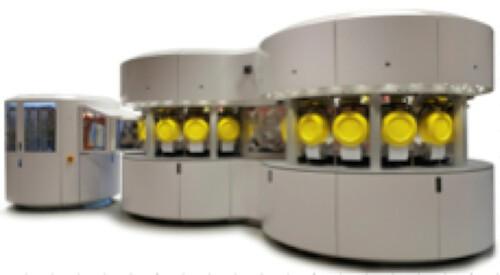Stainless steel is not something one typically associates with solar cells, but Swedish solar equipment manufacturer, Midsummer, is hoping to change that soon.
Midsummer, a thin film equipment supplier, recently achieved a new efficiency record of 16.2% for Copper Indium Gallium Sulphide (CIGS) cells prepared on a stainless steel substrate. The record efficiency was achieved on a large-area 244 cm2 (6” x 6”) cell as part of a regular production run, suggesting that actual production efficiencies should be comparable.
Midsummer’s use of stainless steel substrates is unique among CIGS module makers. Typical CIGS cells are produced by depositing thin layers of multiple materials onto a glass substrate. Although the sodium present in glass improves CIGS cell performance, the use of glass makes the cells/modules heavier and rigid. By substituting glass with stainless steel, Midsummer has managed to create CIGS cells that are durable, light and flexible.
However, Midsummer’s cell production process is different from that of typical CIGS manufacturers in more ways than one. Typical CIGS manufacturers deposit the CIGS layers one at a time using a combination of sputtering and other slow and expensive processes such as atomic layer deposition or using liquid chemicals. Standard fabrication methods require a thermal process called ‘selenization’, which can take several hours to perform.
In Midsummer’s fabrication process, all the layers that comprise a CIGS cells are deposited from compound materials using sputtering, a quick and high-throughput process with a very short cycle time. Midsummer CEO Sven Lindström says, “Considering that the solar cell is made on stainless steel, contains no cadmium and that the production process is an all-dry, all vacuum process where all layers (including the buffer layer) are deposited by sputtering, this achievement by our engineers is truly impressive.”
This process capabilities is already available in Midsummer’s DUO system (pictured below), which is capable of annual CIGS cell throughput of 5 MW.
Image Credit: Midsummer
Finally, by using 6” x 6” substrates, Midsummer’s cells can be interconnected using standard tabbing and stringing methods used to create crystalline-silicon modules. This makes the process unique among CIGS manufacturers, who typically make monolithic modules in which a single cell of size 6-8 m2 is fabricated and later divided into individual cells to achieve the necessary module voltage.
Midsummer claims the unique production methods are in response to changing needs in the PV industry. “The global solar cell market is facing a paradigm shift,” says Lindström. “Fewer large solar energy parks are being built in Europe. Instead, focus is moving to installations on large buildings in cities. The lightweight and flexible thin film solar cells are ideal for this use.”
Midsummer hopes its new efficiency record and unique competencies will give it an edge over other CIGS equipment manufacturers in the light-weight PV space. Says Lindström, “Midsummer’s objective is that our technology shall be a leader in the market segment [of] lightweight, flexible solar panels, and that the company shall grow in tandem with this rapidly growing segment.”
Top Image Credit: Midsummer
© 2014 Solar Choice Pty Ltd
- Future of Utilities – Part 1: The death of base-load generators - 11 September, 2014
- Sharp enters energy storage market with SmartStorage - 18 August, 2014
- Phinergy extends electric car range with metal-air battery technology - 13 August, 2014
